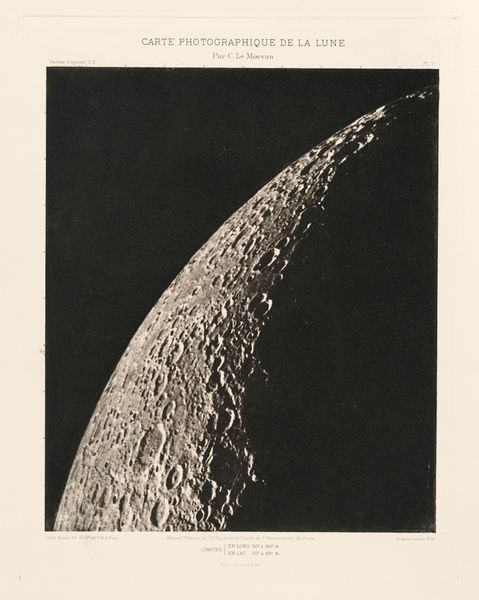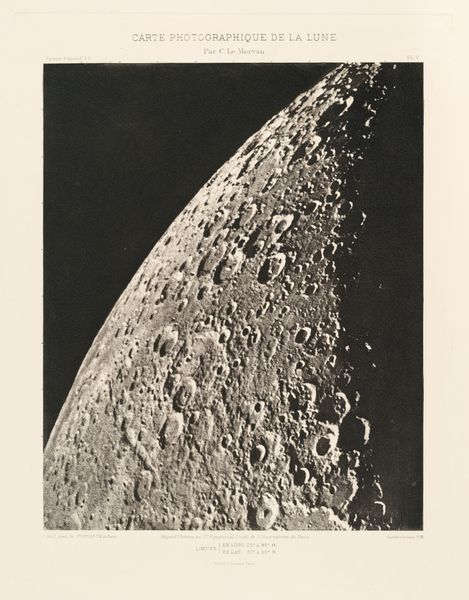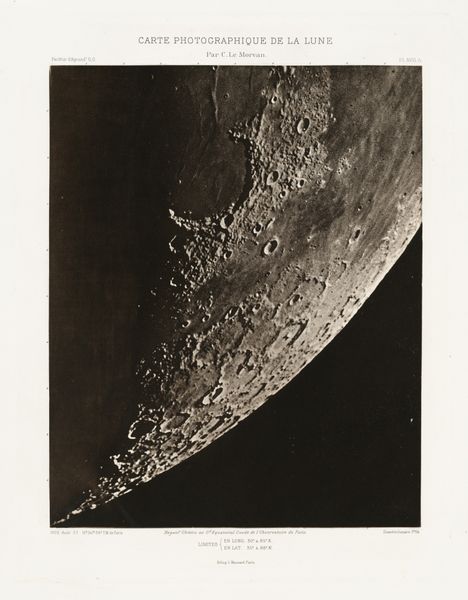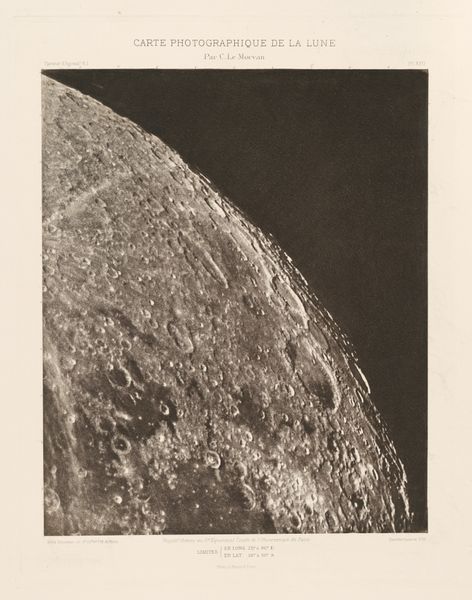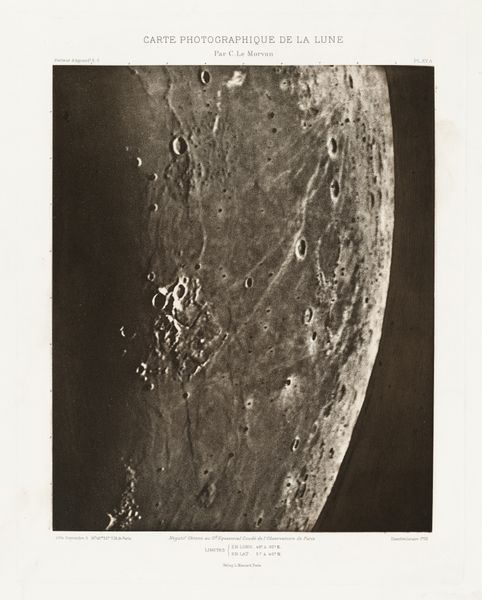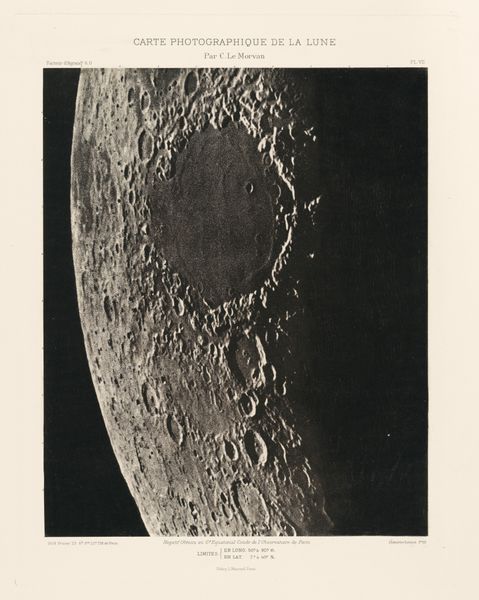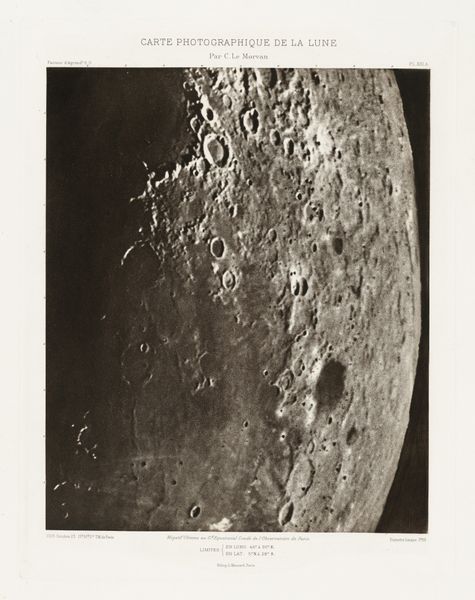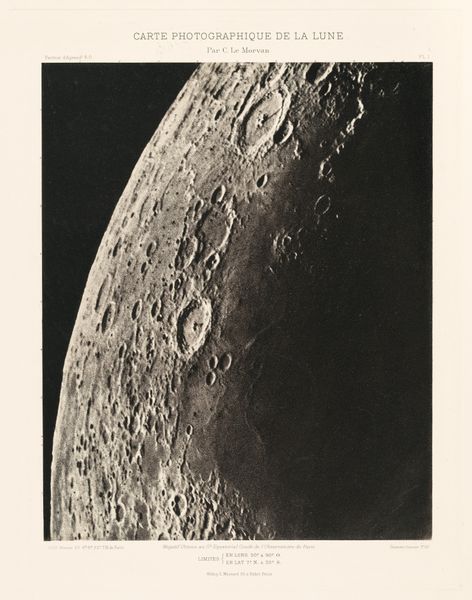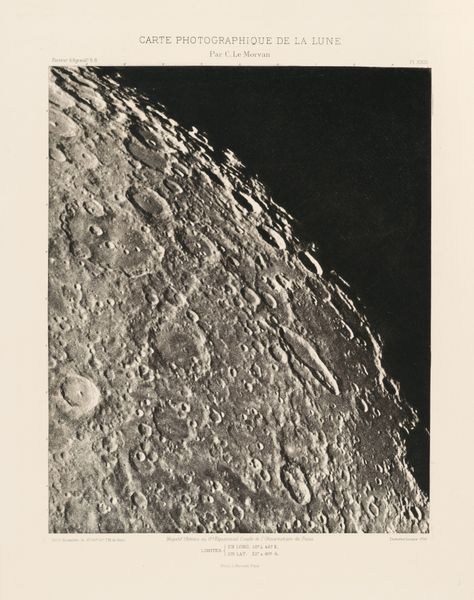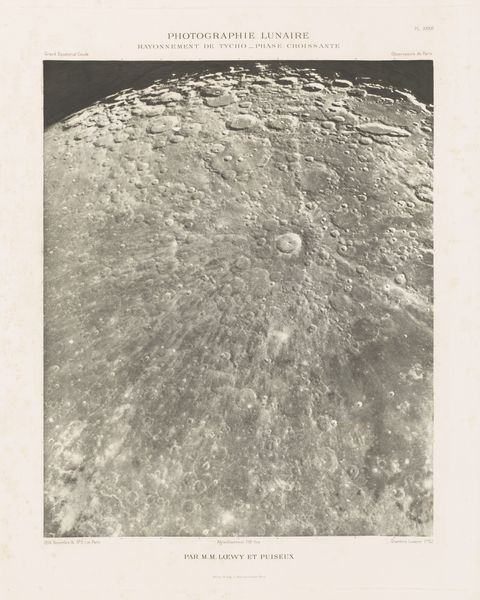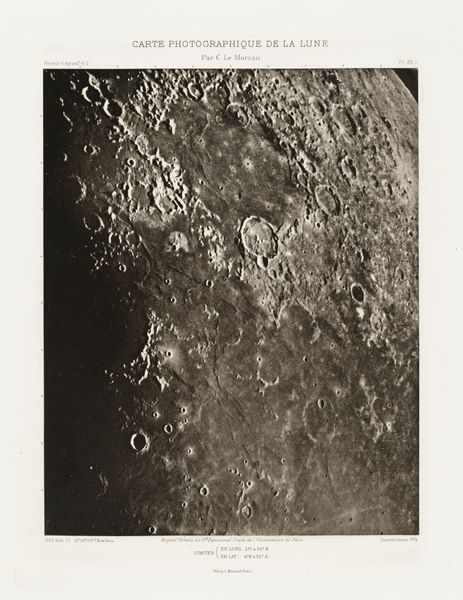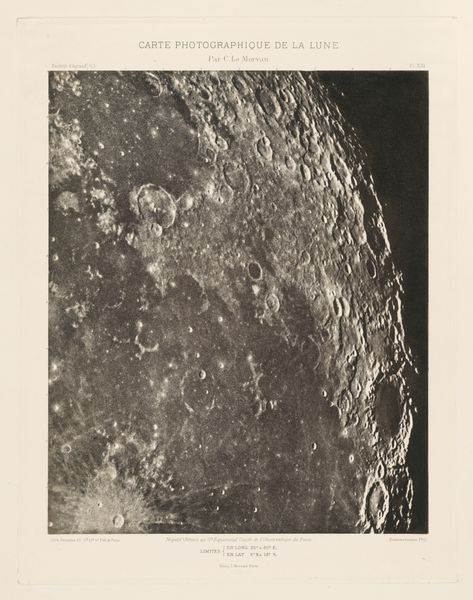
Carte photographique de la lune, planche XXIII.A (Photographic Chart of the Moon, plate XXIII.A) Possibly 1902 - 1914
0:00
0:00
print, photography
# print
#
landscape
#
photography
#
geometric
#
realism
Dimensions: image: 31.1 × 25.5 cm (12 1/4 × 10 1/16 in.) plate: 38.9 × 29.5 cm (15 5/16 × 11 5/8 in.) sheet: 49 × 37.9 cm (19 5/16 × 14 15/16 in.)
Copyright: National Gallery of Art: CC0 1.0
Curator: Standing before us is “Carte photographique de la lune, planche XXIII.A,” a photographic print by Charles Le Morvan, likely created sometime between 1902 and 1914. What are your immediate thoughts? Editor: Stark, almost unsettling. The severe contrast, the texture like scarred tissue…it's a surprisingly visceral depiction of something so remote. Curator: Indeed. Let's consider the formal aspects. The composition emphasizes the stark contrast between light and shadow, delineating the moon's curvature with remarkable clarity. Notice how the topographical detail is amplified by the play of light. Editor: From a historical perspective, it’s compelling. The ambition to chart the moon photographically speaks to the scientific aspirations of the era. Think of the context – astronomy, exploration, the quest for empirical truth. Curator: The interplay of science and art is fascinating. The surface is meticulously rendered, revealing the craters, ridges, and plains with almost obsessive detail. Le Morvan seems determined to capture every nuance of the lunar landscape. Editor: And was this intended as scientific data, or was there a wider audience? Did Le Morvan conceive this work as purely objective or was it aimed for gallery walls? Curator: These photographic plates were integral to astronomical research and documentation; however, one could argue the sheer aesthetic impact transcends mere scientific illustration. Editor: The power of imagery, then. Here is a seemingly impartial rendering which prompts subjective interpretation. Curator: Precisely! It's a visual paradox, at once coldly scientific and profoundly evocative. The deep blacks act as a sort of void, intensifying our focus. Editor: For me, it’s a reminder of humanity’s impulse to explore and document. It serves as an example of a collision between scientific progress and the societal fascination of space. Curator: Yes, and beyond the subject matter, the formal decisions themselves amplify the work’s impact. We can appreciate Le Morvan’s craft even while contemplating its broader historical context. Editor: A dialogue between image and historical impulse. A fascinating snapshot in time.
Comments
No comments
Be the first to comment and join the conversation on the ultimate creative platform.

